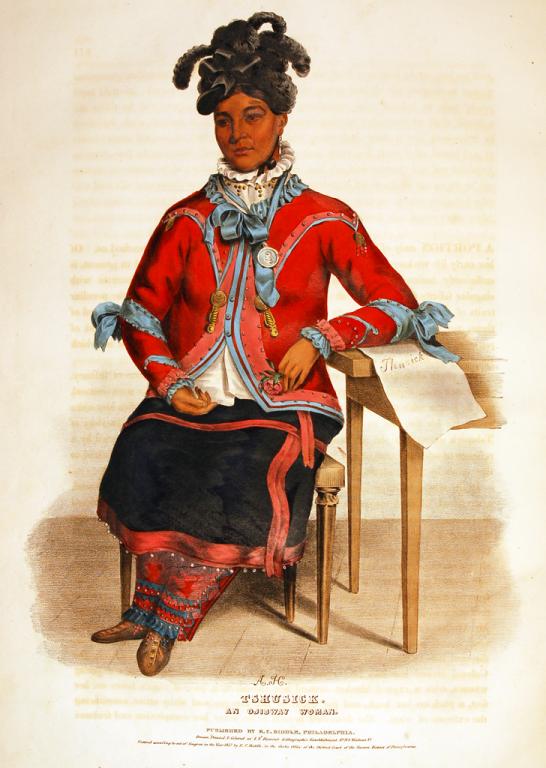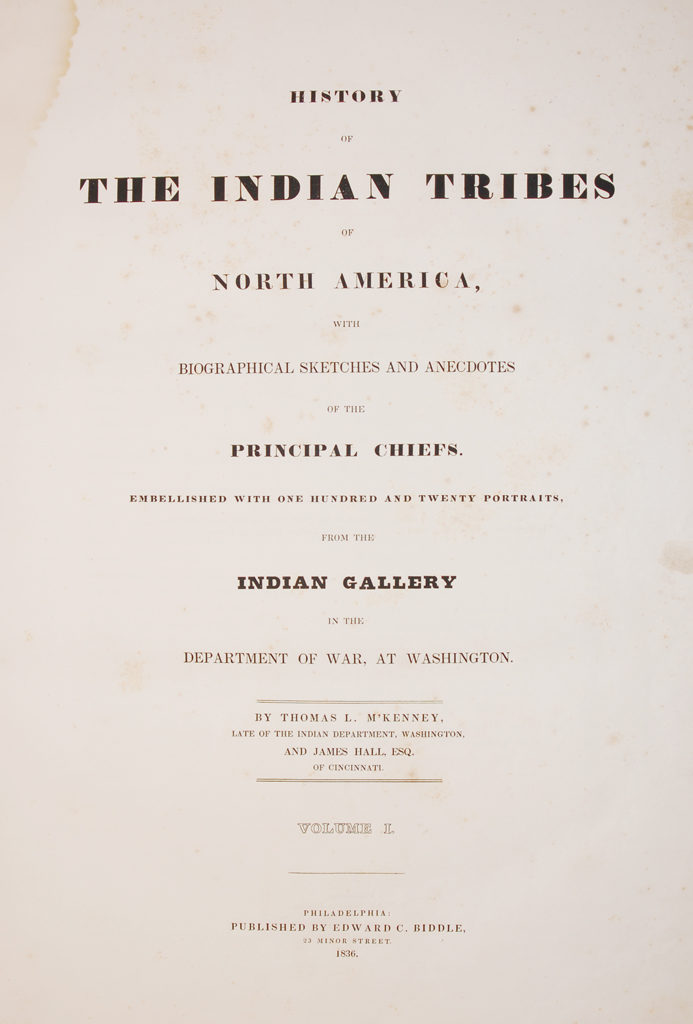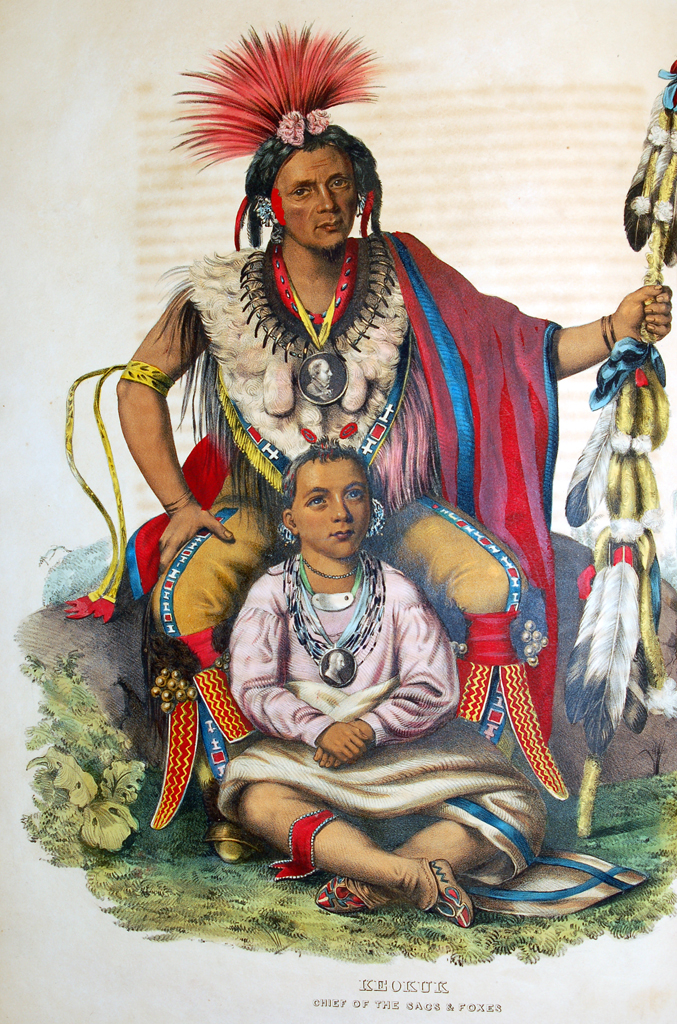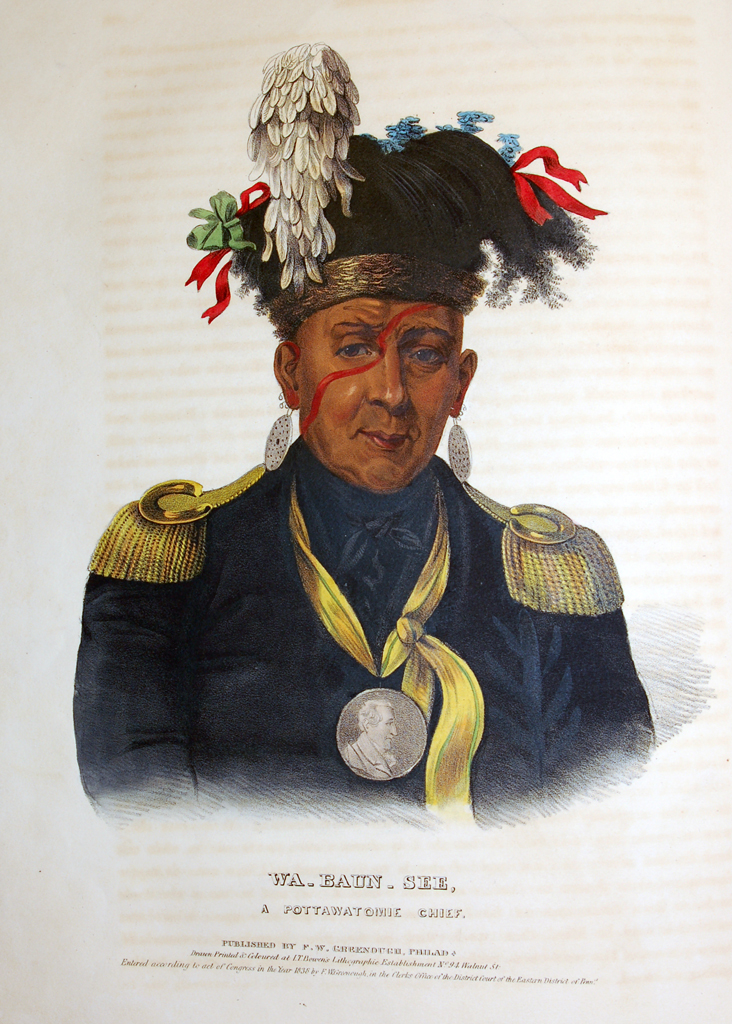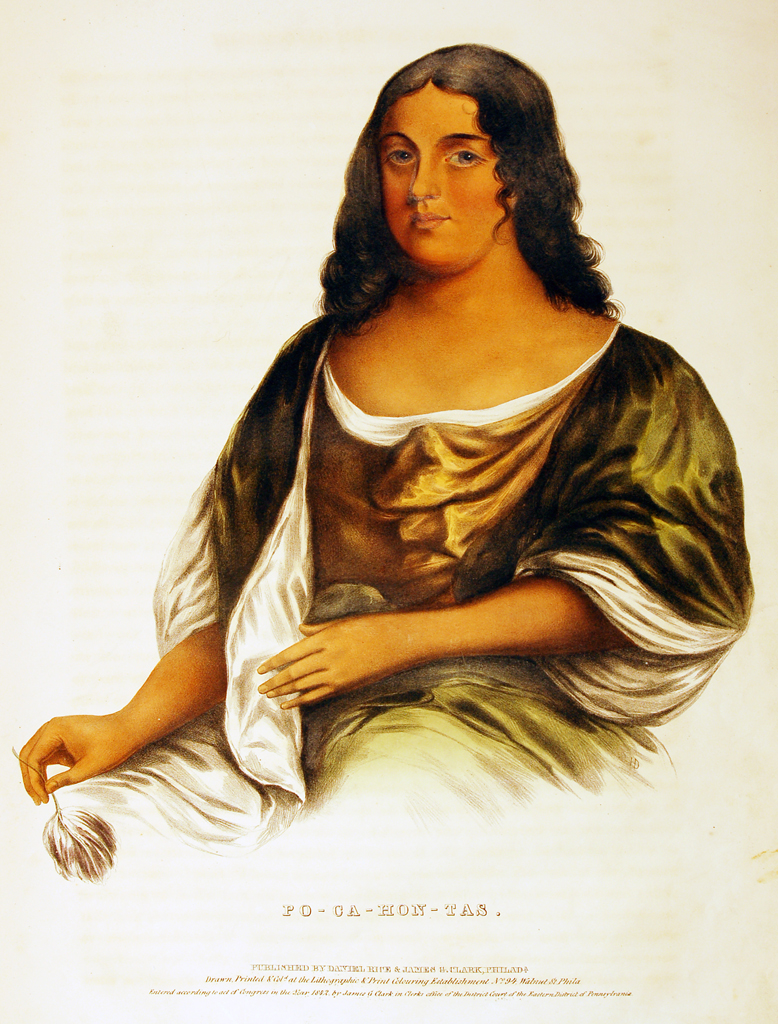In the museum's rare book collection, a remarkable compilation of images exists in History of the Indian Tribes of North America, by Thomas McKenney and James Hall. Published between 1836 and 1844, the three folio volumes contain the historical background of various tribes, biographical sketches of American Indian leaders, and lithographs of 120 Native Americans. The lithographs stem from portraits that were commissioned by McKenney and painted when the subjects visited Washington, D.C. Charles Bird King (1785–1859) painted many of the portraits; others were done by James Otto Lewis (1799–1858).
Thomas Loraine McKenney (1785–1859) was named superintendent of American Indian trade in 1816, and then-Secretary of War John C. Calhoun appointed McKenney head of the newly established Bureau of Indian Affairs in 1824. McKenney commissioned portraits of many members of the various Native American delegations to Washington and arranged for the paintings to hang in a gallery in the War Department. Some years later, the portraits were transferred to the Smithsonian Institution. When President Andrew Jackson removed McKenney from office in 1830—perhaps over a dispute involving Jackson's Indian Removal Act—McKenney teamed with James Hall (1793–1868) to work on the book that would take years to complete. A lawyer, author, and editor, Hall wrote sympathetic tracts on Native Americans in the 1830s. He also transcribed Native American oral sources and collected paintings of American Indian culture. Hall wrote much of the text for the three-volume History of the North American Tribes of North America.
Although McKenney's name is attached to the publication, the editors completed the project without his participation. The hand-colored lithographs that appear in the History of the Indian Tribes of North America were modeled on copies of the War Department portraits created by Henry Inman (1801–1846). Most of the original portraits were lost to a fire in the Smithsonian in 1865; Inman's copies and the lithographs represent the surviving images for many of those paintings. McKenney, a resolute Whig, sought a political position after President Jackson left office, but when he was spurned, he became a public speaker on Native American affairs. Gradually, McKenney fell into obscurity and poverty; outliving his wife and his son, he died penniless in Brooklyn, New York. The publication he instigated, however, remains an important collection of Native American images and nineteenth-century American art, as well as an early ethnographical study.

